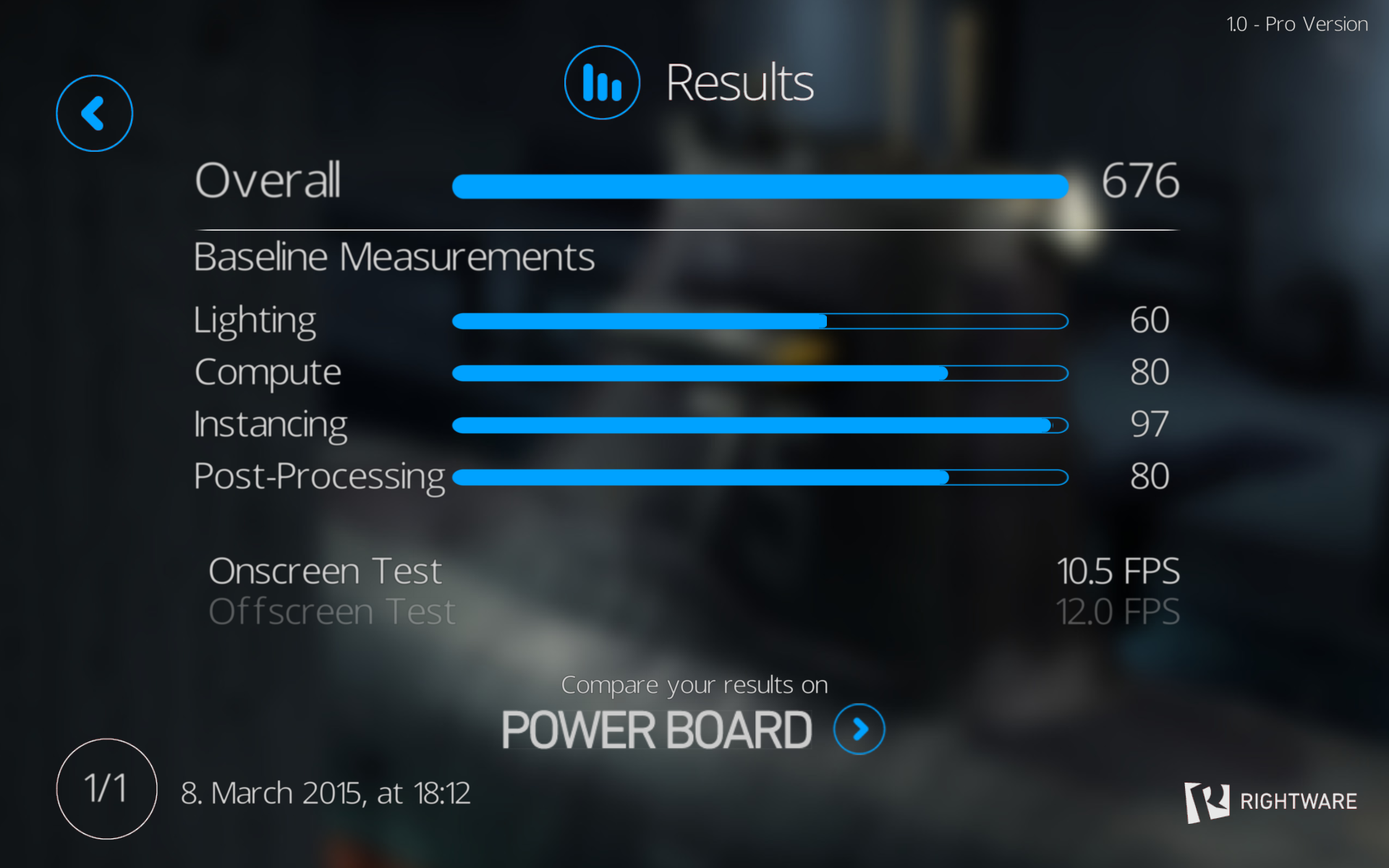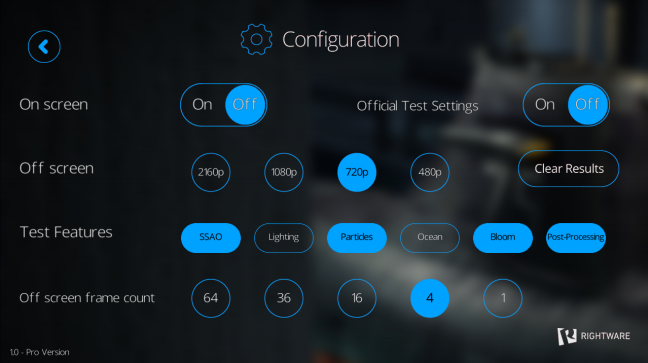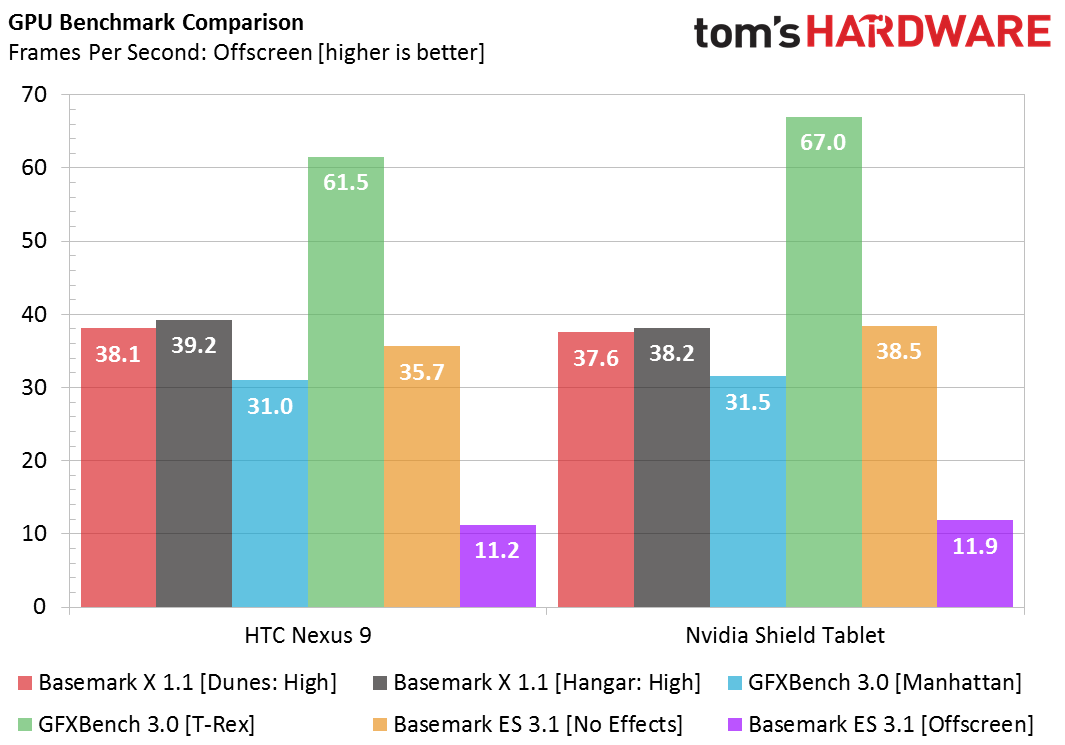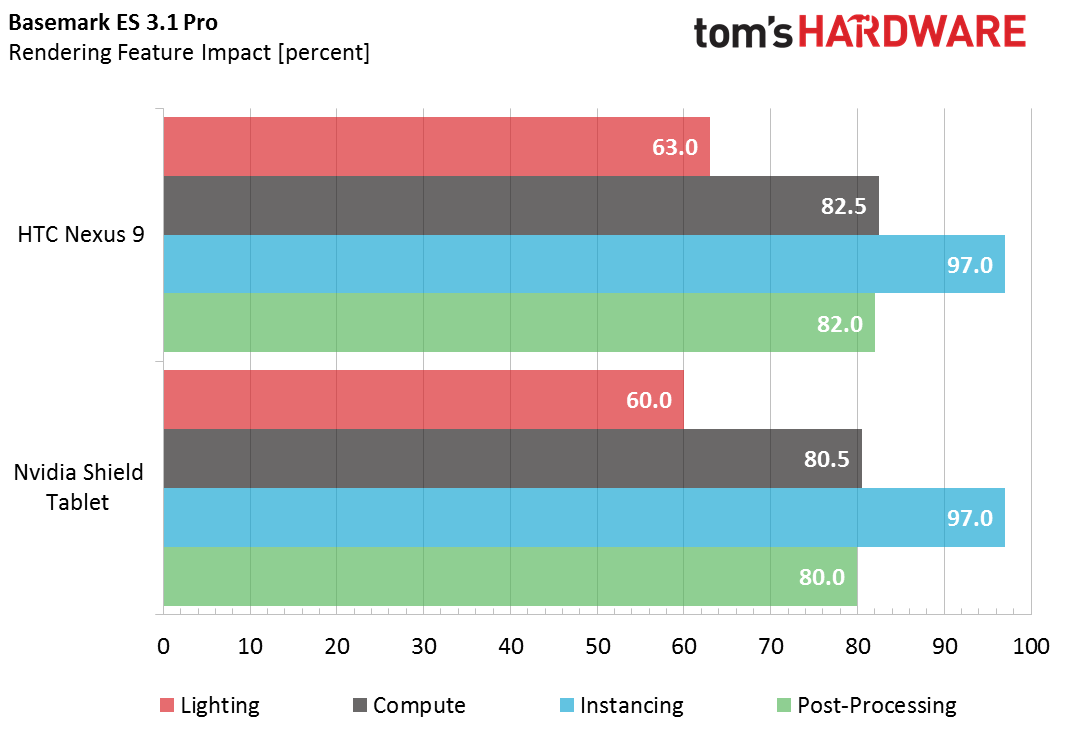Rightware Launches Basemark ES 3.1, World's First OpenGL ES 3.1 Benchmark
As more and more devices support the OpenGL ES 3.1 graphics feature set, there needs to be a benchmark to test these devices and see how well they do with OpenGL ES 3.1 games that take advantage of all the new features. Today, RightWare, the company behind the Basemark ES benchmark, released Basemark ES 3.1, which, along with the recently announced GFXBench 3.1 by Kishonti, are currently the only benchmark tools available to test the new features in the OpenGL ES 3.1 standard.
The new OpenGL ES 3.1 graphics API set includes features such as:
Deferred lighting with alpha blendingWater physics simulation using compute shadersScreen space ambient occlusion using compute shadersIndirect renderingParticle effectsParallax mapping and normal mappingMulti-pass water reflectionsCube map reflectionsCompressed textures with ETC2Depth of fieldBloom shadingMulti-sample anti-aliasing
The new Basemark ES 3.1 allows reviewers and hardware manufacturers to test precisely against some of these graphics features to see where a GPU or CPU struggles the most.
At Tom's Hardware, we use multiple benchmark tools to test devices. We tested the Nexus 9 and the Shield Tablet to see how Basemark ES 3.1 does against other benchmark tools that only support the OpenGL ES 3.0 graphics API set such as GFXBench 3.0 and Basemark X, Rightware's cross-platform benchmarking tool.
As we can see, without the OpenGL ES 3.1 effects applied (orange), the benchmark tool scores roughly the same as the other OpenGL ES 3.0-based tools. With the effects applied, the test is roughly three times more graphically intensive, which results in 3 times fewer frames per second and even 5-6 times fewer frames compared to some of the original OpenGL ES 3.0 tests, such as GFXBench's Manhattan test.
We also noticed that some features have a bigger impact than others. The above results show the impact of lighting, compute, instancing and post-processing. The scores are set as percentages, with 100 percent representing no impact on performance when the effect is enabled compared to having the effect disabled.
Get Tom's Hardware's best news and in-depth reviews, straight to your inbox.
The bigger the score for each feature, the smaller the impact. As you can see in the graph, the lighting effect is the one that impacts performance the most, among the four features, for Nvidia's Shield Tablet and for the Nexus 9 (both using essentially the same Kepler GPU from Nvidia). Instancing, on the other hand, has the smallest impact.
Rightware's Basemark ES 3.1 will be available as three different versions: Free, Pro and Corporate. The first two can be installed by anyone from the Play Store, while the third will be available only for interested companies.
Update [09:58 3/10/2015]: This article was updated to mention the recently released GFXBench 3.1, which also tests OpenGL ES 3.1 features.
Follow us @tomshardware, on Facebook and on Google+.
Lucian Armasu is a Contributing Writer for Tom's Hardware US. He covers software news and the issues surrounding privacy and security.
-
Fierce Guppy Oh, it's for mobile devices. What a letdown. The ratio of DirectX to OpenGL benchmark tools that exist in a single easy to use package for the PC remains a gazillion to one. Or at least one that I know of.Reply




